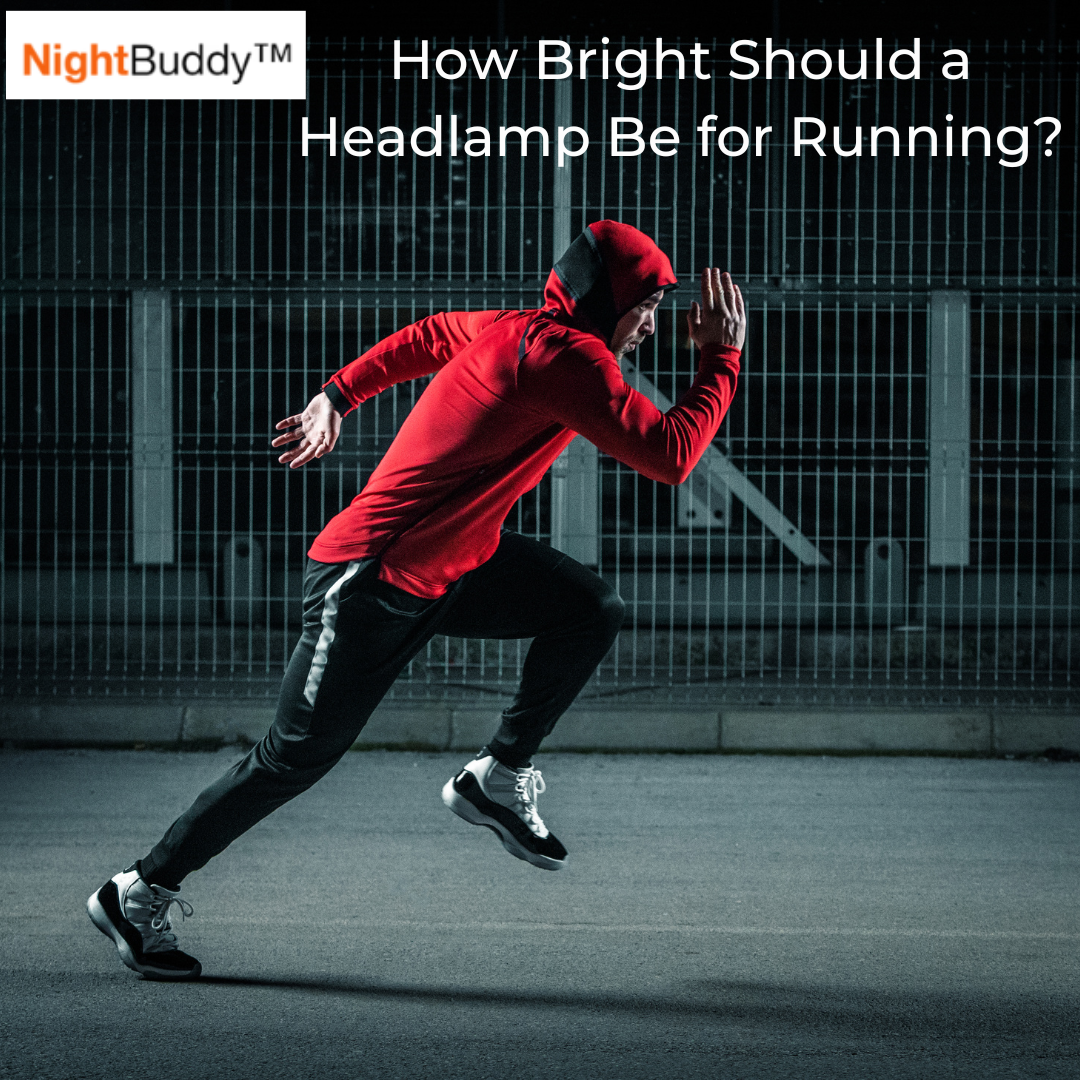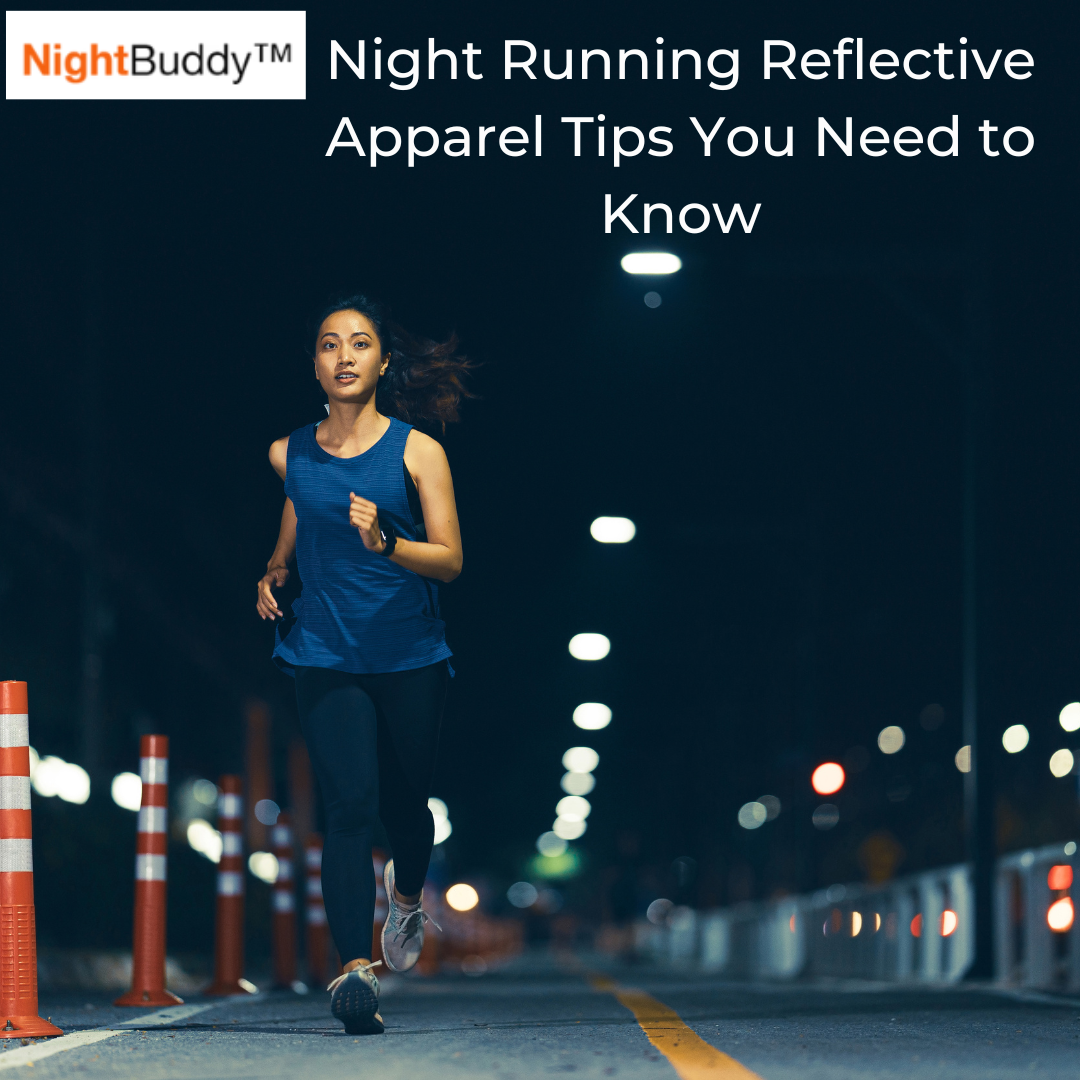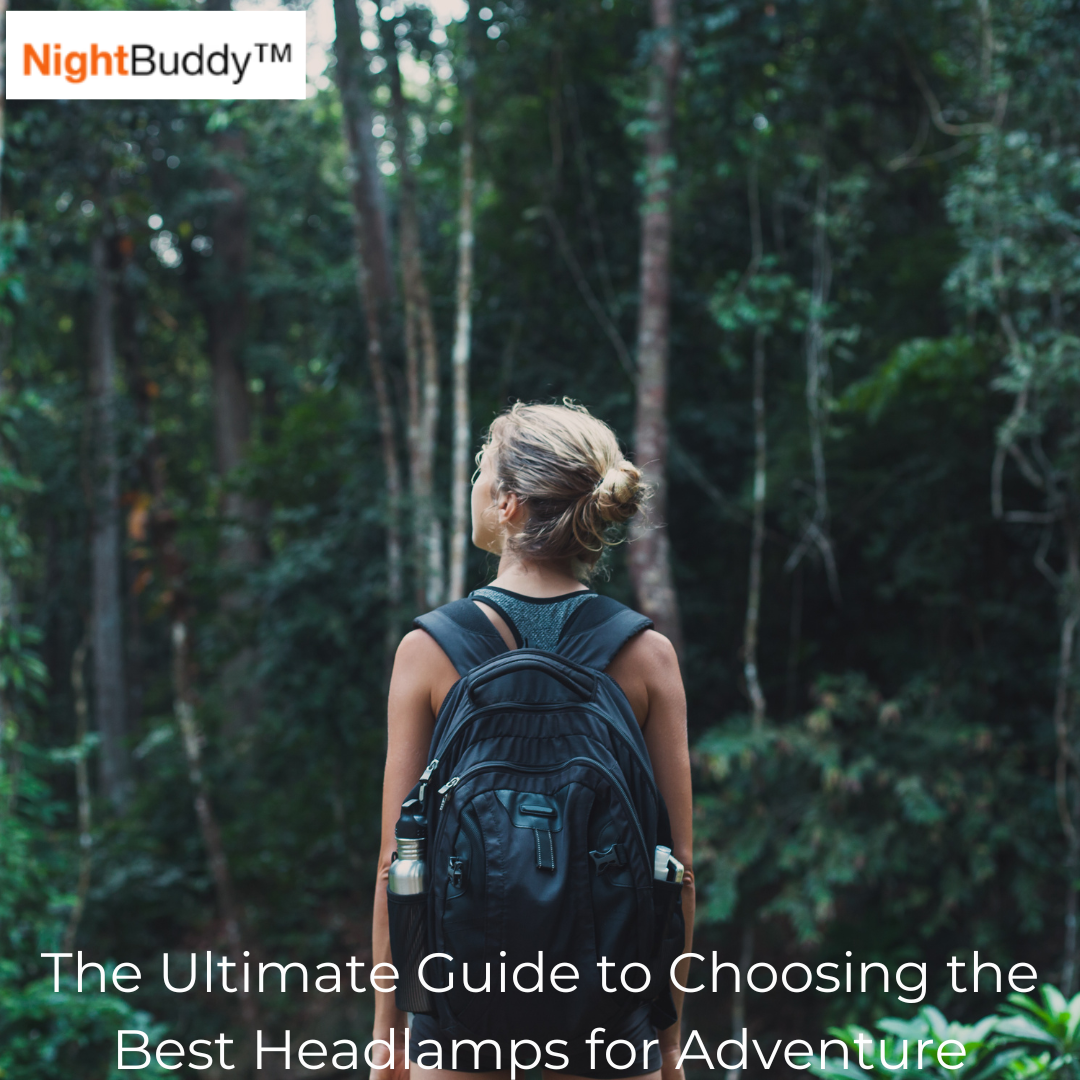How to choose the brightest running headlamp?
You need the best and brightest headlamp for those nighttime runs, right?
Generally speaking, aim for a headlight that can produce at least 200 lumens on its highest setting.
The brightness of a light source is measured in lumens. On treks and evenings without stars, lamps with larger lumen counts—300 and up—are preferable.
Look for a light that has more than
- low
- medium
- high settings
if you want a single device that can handle many scenarios. Some lamps can adjust to the ambient light automatically, which is useful if, for example, you glance down at your watch and don't want the reflection to blind you (the light dims a bit).
Some give you additional manual adjustment options.
See the best running headlamps here!
Running can be an arduous task whenever it's dark. If you're an early morning jogger, a night runner, or an active busybody even in the winter, you'll need all the light you can get. This is where running headlamps come into play.
Running headlamps are small, portable lights worn on the head to provide illumination while running or engaging in other outdoor activities. They are usually made of a headband or strap that holds the light against the head and an adjustable beam that can be pointed in any direction. They are designed to be lightweight, comfortable, and easy to use.
There are several things to consider when buying a running headlamp, but brightness is the most important.
This article will cover all you need to know about how bright your headlamp should be, highlighting everything from gauging brightness to how it affects battery life.
Why You Need a Bright Headlamp for Running
You need a bright headlamp for running because, they are essential, especially if you enjoy running in the early morning or evening, or in areas with little natural light. They allow you to see where you are going.
There are many reasons why people run in low-light conditions. For one, scheduling issues. Some runners are only able to fit in runs before or after work. Running headlamps can give more flexibility, as you are not just limited to daylight hours for your exercise.
Also, running at night (see our how to stay visible in daylight and best tips for running at night) can be enjoyable as it allows you to reconnect with nature differently.
Feeling the cold night air or listening to wildlife is a great way to unwind. However, it can be dangerous, as it’s easy to trip over obstacles or miss a turn. Having a headlamp illuminates the path ahead, making it easier for you to navigate and stay safe.
Additionally, a headlamp will make you more visible to others. This is important when running on roads or trails with little to no ambient light. Cars or other automobiles may have a hard time seeing you in these conditions, so a headlamp will help to increase visibility and reduce the risk of accidents.
Also!
In the case of an emergency, where a runner gets lost or injured, a headlamp can be used to signal for help or to navigate to safety. It is also a hands-free source of light, which means that you can use your hands for other important things like carrying water, a phone, or a music player.
With the many benefits that running headlamps provide, it is highly recommended that all runners have one in their gear.
Understanding Headlamp Brightness
A headlamp’s brightness is a measure of the amount of visible light emitted. It is measured by determining the amount of light output or lumens count.
What are headlamp Lumens?
Lumens, also known as the light output, measure the total amount of visible light coming from a source. In terms of running headlamps, lumens count measures just how bright the lamp is.
A higher lumens count means that a headlamp will have a brighter light, and vice-versa. For example, a headlamp with a lumen count of 150 will be dimmer than a headlamp with a lumen count of 200.
There are many benefits from using a headlamp with a high lumens count. A brighter headlamp improves visibility in low-light conditions. This can be especially important for runners who frequently run in situations or locations with no ambient light.
You should know, a high-lumen headlamp can also aid in boosting a runner's self-assurance!
Bright lighting generates a sense of safety and security when running in locations with no ambient light, allowing runners to concentrate more on their jogging and less on their surroundings.
Beam Distance
This refers to the maximum distance (in meters) that a headlamp can project usable/visible light. This is is also an important factor you need to consider when determining the brightness of a headlamp.
Headlamps with a longer beam distance shine brighter and farther, whereas headlamps with a shorter one would not be as bright and far-reaching.
For example, a headlamp with a 120m beam length allows you to see 120m in front of you. In the same vein, a headlamp with a 150m beam length will allow you to see 150m in front of you.
Beam Pattern
The beam pattern refers to the shape of the light produced by the headlamp. It’s important to choose the right kind of beam pattern for your type of running. Most headlamps typically carry three primary kinds of beam patterns: a wide beam, a flood beam, or a focused beam.
-
A wide beam pattern radiates uniform, close-range light. It also provides more peripheral illumination and is best for jogging or running in areas with sufficient ambient light.
-
A flood beam pattern radiates long-range light to shine over longer distances. It is best for more vigorous activities like trail running.
-
A focused beam pattern is a combination of both the wide beam and the flood beam. The wide beam offers good ground lighting while the focused beam provides added depth.
Some headlamps are equipped with multiple beam patterns and allow you to switch between them. This can be useful depending on the environment you are running in.
Type of Bulb
The type of bulb used in a headlamp significantly affects how bright it will be. There are three main types of bulbs used in headlamps: halogen, LED, and HID.
Halogen Bulbs
These are the most common type of bulbs used in headlamps, as they are relatively cheaper to produce.
Halogen bulbs use a tungsten filament surrounded by halogen gas. This helps the filament glow brighter and last longer, increasing the brightness of the headlamp. Also, the light produced by halogen bulbs is bright and white, making it easier to see the path ahead and avoid obstacles.
However, halogen bulbs produce more heat. They are not as efficient as other bulbs. The heat poses a safety risk and can cause discomfort. Also, they are not as durable and often have a shorter lifespan.
LED (Light-Emitting Diode) Bulbs
These are the most energy-efficient bulbs on the market. They are a favorite among manufacturers because they are the most long-lasting and durable.
LED bulbs are more efficient because they produce light using a semiconductor. As a result, they generate less heat, which makes them a more comfortable and safer option for runners.
These bulbs produce a bright, white light that is evenly distributed and does not contain dark spots or shadows. This is ideal for use in headlamps, making it easier to see the path ahead.
However, LED bulbs can be more expensive, making them a less convenient option for some runners.
HID (High-Intensity Discharge) Bulbs
As the name suggests, these are the brightest type of bulbs used in headlamps. This is because they produce light by using a special gas and an electric current. They have an arc instead of a filament between the two electrodes. Headlamps that use HID bulbs provide a bright, white light that increases visibility while running.
Although HID bulbs are the brightest type of bulbs, they are less efficient and can take a few seconds to achieve full brightness.
Type of Lens
The type of lens used in a headlamp determines its brightness. The type of material used in the lens can affect the amount of light transmitted and scattered.
In addition, lenses with a narrower focus produce a brighter beam but with less peripheral illumination, while lenses with a wider focus produce a lesser beam with more peripheral illumination.
The refractive index of the lens material also affects a headlamp’s brightness. It controls the amount of light that is refracted as it goes through the lens. The shape of the lens also impacts brightness by affecting how light is spread and focused.
Battery Life
Battery life is another factor that affects the brightness of a headlamp. The larger a headlamp’s battery, the longer its battery life and the brighter it shines.
If you're going on longer runs, your headlamp's battery life must be built to last through your run. As such, it's recommended to use headlamps that run on AAA batteries or AA batteries.
Note that most USB-powered headlamps have a shorter battery life. Also, rechargeable batteries can be unreliable, as they need an hour or two to be charged. While a headlamp with a rechargeable battery can be great for shorter road running, it is not the best for trail running.
To maximize battery life and your run, headlamps that run on AAA or AA batteries are recommended. For one, they are widely available and easy to replace, which makes them a convenient option. They are also small and portable, so they do not add much weight.
Similarly, the battery pack of a headlamp impacts its battery life. The battery pack is the source of power that provides the energy needed to light up the headlamp. The capacity of a battery pack determines the amount of energy it can store.
The larger the battery pack’s capacity, the longer its battery life, and vice versa. It also influences the maximum brightness a headlamp can provide. Headlamps with a rechargeable battery pack can also come in handy.
It's important to remember that while the battery pack can increase brightness, it will consume more power the brighter it gets. This will inadvertently result in shorter battery life.
It is important to buy a headlamp that strikes a perfect balance between brightness and battery life to ensure that it will last your whole run.
Factors That Affect Determine How Bright Your Headlamp Should Be

As established, brightness is a headlamp’s most crucial quality. But with so many options available, it can be challenging to determine just how bright a headlamp should be. The answer depends on a few key factors:
-
Type of running
-
Type of environment
-
Battery life
-
Personal preference
Type of Running
There are several types of running, each with unique features. For instance, the condition of the terrain dictates the necessary level of headlamp brightness. The most popular types of running are trail running and road running.
Trail Running
The best headlamp for trail running is a bright one. This is because trail running involves running on unpaved paths, such as mountains, forests, and hills. These trails can be uneven and challenging to navigate, and they also come with the risk of wildlife encounters.
So, not only is it essential that trail runners wear appropriate clothing, but they also need to be equipped with a running headlamp that provides sufficient light output. A brighter light will help you see obstacles and avoid tripping or injury.
A running headlamp with at least 300 lumens provides enough light for trail running. However, if a trail has dense trees or other obstacles, you might need to consider a headlamp with even more lumens.
Road running
This is a popular form of running, especially among people who live in urban areas. A headlamp with a lower light output is usually sufficient, as road surfaces are typically smoother and easier to navigate than trails.
A headlamp with 150 lumens is enough to see the path ahead while remaining visible to drivers and other road users.
Type of Environment
This is another factor to consider when choosing the brightness of your running headlamp. If you plan on running in an urban environment, it is better to get a headlamp with a lower lumen output and a red light mode.
Red light mode on headlamps helps preserve your night vision while providing a decent light output. This is because red light does not shrink our pupils like white light. Not only does this help your sight, but you are also less likely to blind drivers and other road users, making it safer for everyone.
However, if you’re running in a rural area with little to no ambient light, then not only is a running headlamp with a high brightness and light intensity recommended, but it is also an absolute necessity to see the path ahead.
Battery Life
The battery life of running headlamps determines how long it will provide illumination before you have to charge the batteries. It also determines the quality of its light output.
Long battery life typically comes at the expense of a headlamp’s brightness. As the batteries drain, the brightness of a headlamp reduces. The higher the brightness settings, the quicker the batteries drain.
So, when choosing how bright you want your headlamp to be, it is important to consider how long you want its battery life to last and how far you will be running (make sure to check out our pen flashlights).
Personal Preference
When all is said and done, your preference is a deciding factor. Some runners prefer a brighter light that provides a lot of visibility, especially while running in areas with little to no ambient light. Others may prefer a lower, less intrusive light that provides just enough illumination to light up the path ahead.
In conclusion, the ideal brightness for a headlamp for running depends on several factors, but regardless of the brightness, it's important to choose a headlamp that is comfortable to wear, easy to adjust, and provides the right amount of light for your specific needs.
Recommended Headlamp for Road Running
As a road runner, you'll be running on pavements lined with streetlights and automobiles. Because of this, you need a headlamp that can provide at least 100 lumens or more. Here is our top headlamp recommendation for any road runner out there.
NightBuddy BeanieLamp (Top Pick)
The NightBuddy BeanieLamp is a simple option for road runners. It delivers up to 100 lumens and shines to a distance of up to 300ft.
The BeanieLamp is made out of stretchy fabric, making it a one-size-fits-all. The high-quality stretchy fabric keeps you comfortable throughout your run. It can also keep you warm during the colder months.
The BeanieLamp also has multiple light modes that you can choose from depending on the path you'll run on. It is also equipped with a USB rechargeable battery that lasts up to four hours continuously and 68 hours intermittently.
It retails for $24.95, making it an affordable option for most runners.
PROS:
-
Three different lighting modes
-
Stretchy fabric for different head sizes
-
Is lightweight and easy to maintain
-
Battery life lasts up to four hours
CONS:
-
Uses up to two hours to recharge
Recommended Headlamp for Trail Running
For trail running, you need a headlamp with enough brightness to illuminate dense pathways. Trail runners also need something built for comfort to withstand longer pathways and uneven surfaces. Here's our recommendation for the best headlamp for trail running.
NightBuddy 230º LED Headlamp
Designed with zero bounce technology and delivering ultra-wide illumination, the NightBuddy 230º LED Headlamp is our top recommendation for trail runners.
The zero bounce design ensures maximum comfort as you run because it makes sure your headlamp doesn't knock into things or smack into your head. The headlamp is also made out of lightweight and comfortable materials.
It is also equipped with adjustable straps to fit all head and helmet sizes, ensuring that it remains safe and secure on your head.
The headlamp delivers up to 350 lumens of visible light. It will give you a consistent beam for 3 hours on the brightest light setting and 8 hours on the lowest light setting. The headlamp has five light settings to choose from.
The NightBuddy 230º LED Headlamp is equipped with a red light mode to protect your night vision, reduce glare and increase peripheral vision. The headlamp retails for $34.95
PROS:
-
Delivers 350 lumens of light
-
Has adjustable straps to fit all head and helmet sizes
-
Has 5 lighting modes to choose from
-
Built with a red light mode
-
Lightweight and durable
-
Zero-bounce design
CONS:
-
The on/off sensor can be a bit complicated
Wrapping Up
That's all you need to know about a headlamp's brightness! Whether you're a serious runner or a casual jogger, this article is packed with everything you need to understand about headlamps.
If you're still unsure which headlamp to choose for optimal brightness, we suggest the NightBuddy 230º LED Headlamp. It is a well-rounded choice with the right amount of lumens for both trail and road running. You should keep it on the lowest light setting for the latter though.
In addition to delivering a powerful lumens count, this headlamp is stylish, comfortable, and affordable. There's nothing else to ask for!
Read:





Leave a comment
This site is protected by hCaptcha and the hCaptcha Privacy Policy and Terms of Service apply.